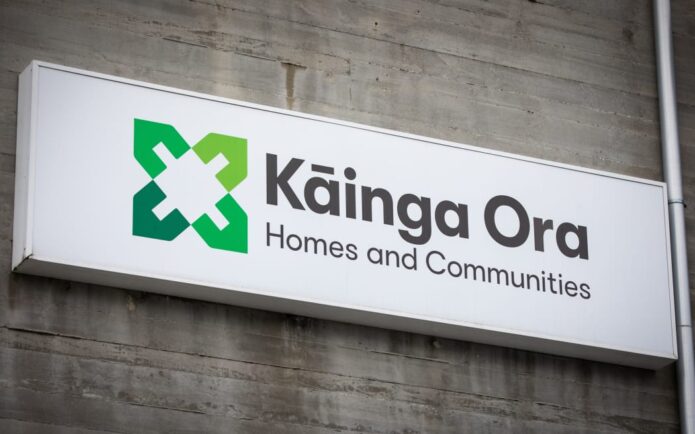PHOTO: In 2007 Prime Minister Helen Clark was photographed with David McGregor, the son of first tenant of the first state house at the 70th anniversary celebration. ROB KITCHIN/STUFF
The inaugural New Zealand state house, located at 12 Fife St in Mirimar, Wellington, recently marked its 86th anniversary with little fanfare. Ironically, just six years ago, when the house turned 80, a modest celebration took place, complete with a cake, marking the end of Housing New Zealand stock sell-offs.

The historical significance of this house is notable. It was initially sold to its first tenants, tram conductor David McGregor and his wife, Mary, who moved in on a momentous day in 1937 when Labour Prime Minister Michael Joseph Savage officially inaugurated the residence. Historical photographs even captured the Prime Minister assisting in carrying a table into the house, an event described as a “propaganda coup” for the government. However, according to the McGregors’ son, the Prime Minister allegedly dropped the table as soon as he entered the front door.
During the house’s opening ceremony, approximately 300 other guests tromped through the McGregor’s new home, muddying the floors and leaving fingerprints on freshly painted fixtures. Growing impatient with this “home invasion,” the McGregors eventually asked their guests to leave, but for days afterward, they had to contend with sightseers peering through their windows. Eventually, the government began selling off some of its social housing, and David McGregor acquired the property in 1968. The title was transferred to his wife, Mary, in February 1983. After her passing, their son, David, sold the house back to the state in the same year.
On the 60th anniversary of the house, it was occupied by the Nysse family, consisting of John, Winnie, and their three children. They expressed their struggle to make ends meet under the new system of market rents introduced six years prior. While the McGregors paid 32s 6d in weekly rent, which was around a third of their income, in 1997, the Nysse family found themselves paying nearly three-quarters of their income in rent. Members of the Nysse family participated in the 2017 cake-cutting ceremony, during which Prime Minister Jacinda Ardern announced the end of state house sell-offs.
Heritage New Zealand indicates that the Miramar house was based on one of 400 different house plans designed for the scheme by architects employed by the newly established Department of Housing Construction. The house, constructed by the private building firm Higgins and Arcus, is a single-storey building with a hipped roof made of locally sourced tiles and a low-maintenance veneer of plastered brick, which is characteristic of state houses. The design aimed to maximize available sunlight, with the living room positioned to the north, the kitchen on the east side for morning sun, and bedrooms to the west. Efforts were made to separate “private” and “public” zones, and in the early years, houses came equipped with a wall-mounted safe to keep food chilled, as refrigerators were scarce. Laundries were provided with two concrete tubs and a copper boiler, and each house featured an open fireplace in the living room.
While social housing from this era was later criticized for small windows, cramped porches, inefficient layouts, and drafty hallways, the robust construction of the older timber houses has made them highly sought-after for renovation projects in recent years. Although they hold appeal for first-time homebuyers, their locations sometimes place them out of reach for many.
SOURCE: STUFF













